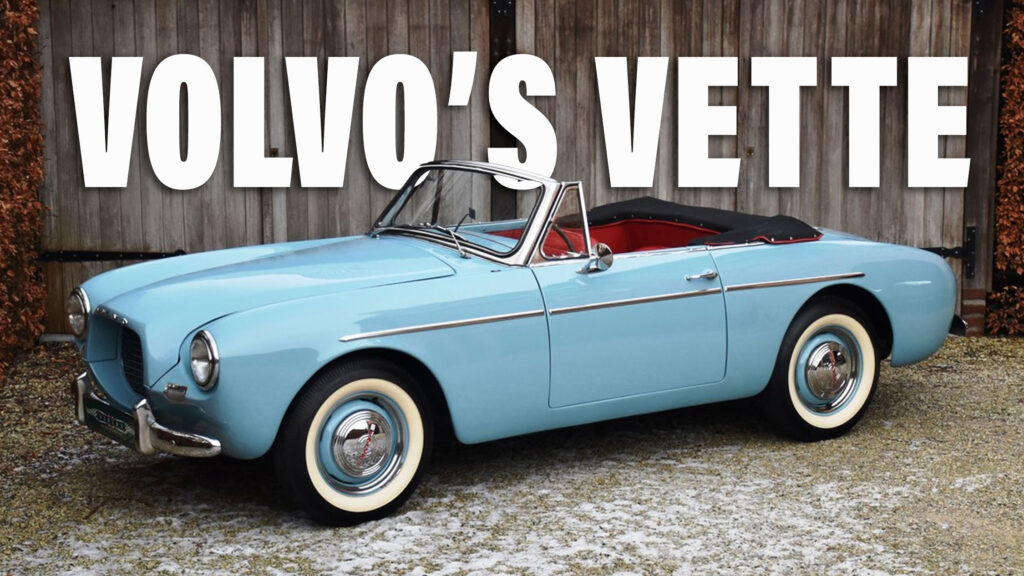Two-seater was inspired by the early Chevrolet Corvette, except under the hood, where a 70 hp inline four lived
3 hours ago
 –>
–> 
–>
Despite Volvo’s reputation being built on safety, solidity and practicality, not all of the Swedish brand’s cars have fitted that bill. The P1800 coupe of the 1960s is one that comes to mind, but far more out there, and so rare that it’s almost unknown today, is the Sport P1900 from the decade prior.
Back in the 1950s automakers were jumping on the affordable sports car trend like their modern counterparts are now embracing EVs and crossovers. Every self-respecting mass-market car brand operating in the U.S. market needed a small convertible, even sensible Chevrolet, which unveiled the Corvette in 1953, and equally straight-laced Volvo, whose boss was inspired by the bow-tie roadster to make his own fiberglass toy soon after.
Volvo had no expertise with plastic bodies, so contracted California-based Glasspar, to deal with the fiberglass portion of the project, which was then mated to a tubular steel chassis. While the idea for the P1900 supposedly came from Volvo boss Assar Gabrielsson seeing an early Corvette, but the Swedish imitation wasn’t anything like as muscular, making do with a 1.4-liter inline four from the PV444 sedan that produced 70 hp (71 PS) by slurping through two carbs.
advertisement scroll to continue
Related: Could Volvo Be Planning An Exciting Sports Car?
One thing the Volvo and Vette sports cars did apparently share, was quality problems. Though Volvo later brought production of the bodies to Sweden, the chassis was weak and the P1900 was reportedly so badly built that when the new CEO took one with him on vacation he hated it so much he cancelled the project. Not that hardly anyone noticed.
Demand for the 1900 Sports was so low that Volvo had only managed to build 67 or 68 between the car entering production in 1956 and the axe falling a year later. Even leaving aside the quality issues, the ugly front-end can hardly have helped sales, though we imagine it fitted with the 1950s obsession with jets.
This car is number 65 and was delivered new to California in early 1957, remaining there for 40 years before being shipped back across the Atlantic by a Belgian collector.
Recently restored to its original blue with a red interior, it’s thought to be one of only 50 cars remaining, the advert on Car & Classic claims. There’s no asking price given, and there aren’t any others around to help give us a steer, but we imagine it’ll be well north of $120,000 based on condition and the curiosity value.

 <!–
<!– –>
–>